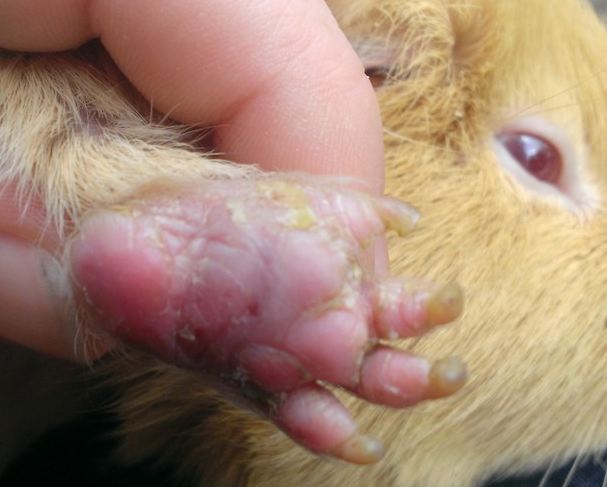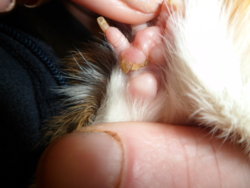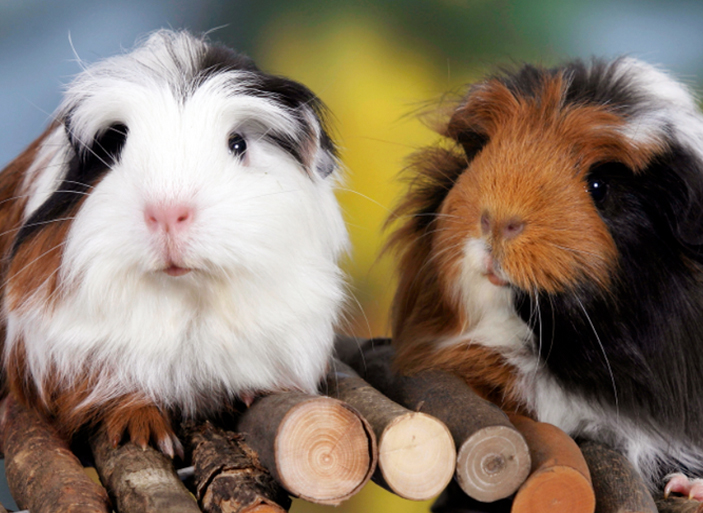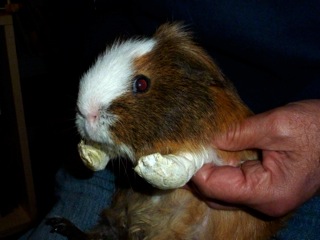guinea pigs, also known as cavies, are popular pets known for their playful personalities and adorable squeaks. However, many owners may not be aware of a silent crisis plaguing these small creatures – bumblefoot. This painful and debilitating condition affects the footpads of guinea pigs and can lead to severe consequences if left untreated. In this article, we will delve into the complexities of bumblefoot, exploring its causes, symptoms, diagnosis, treatment, and prevention.
>> READ MORE:
- Can Guinea Pigs Eat Celery?
- Abyssinian Guinea Pigs A Comprehensive Guide
- The American Guinea Pig A Delightful Companion for Over a Century
- Welcome to the World Caring for Newborn Guinea Pigs
Contents
Causes and Risk Factors for Bumblefoot in Guinea Pigs

Bumblefoot, also known as pododermatitis, is a bacterial infection that affects the footpads of guinea pigs. It is typically caused by an injury or irritation to the footpad, which creates an entry point for bacteria. However, several factors can contribute to the development of bumblefoot in guinea pigs:
Housing Conditions:
One of the primary risk factors for bumblefoot is inadequate housing conditions. Guinea pigs require specific living arrangements to stay healthy and happy, and providing them with the right environment is crucial in preventing bumblefoot. Some common housing conditions that can lead to bumblefoot include:
- Inadequate Flooring: Wire cages, while well-ventilated, can cause pressure ulcers and injuries to the footpads. The uneven surface can also irritate the footpad, making it more susceptible to infection. Solid flooring options like linoleum, tile, or wood with a smooth, non-slip coating are safer choices for guinea pigs.
- Dirty Cages: Unhygienic conditions provide a breeding ground for bacteria and increase the risk of infection. Regular cleaning and disinfecting of the cage are essential in preventing bumblefoot.
- Insufficient Space: Overcrowding and lack of space can lead to increased pressure on the footpads, making them more susceptible to injury and infection. Providing enough space for your guinea pig to move around freely and exercise is essential in preventing bumblefoot.
Poor Diet:
A diet deficient in certain nutrients can also contribute to the development of bumblefoot. Guinea pigs require a diet high in fiber, vitamin C, and calcium to stay healthy. A lack of these nutrients can weaken their immune system, making them more prone to infections like bumblefoot.
Obesity:
Obesity is another significant risk factor for bumblefoot. Excess weight puts more pressure on the footpads, increasing the likelihood of injury and infection.
Recognizing the Signs and Symptoms of Bumblefoot

As guinea pigs are small creatures, it may be challenging to spot the early signs of bumblefoot. However, being aware of the symptoms can help you catch the condition in its early stages and seek proper treatment. Some common signs and symptoms of bumblefoot include:
- Redness or Swelling: The footpad may appear red or swollen, indicating an infection.
- Limping or Difficulty Walking: As bumblefoot can cause pain and discomfort, your guinea pig may start limping or have difficulty walking.
- Discharge or Lesions on Footpad: In severe cases, you may notice discharge or open sores on the footpad.
- Reluctance to Move or Play: If your usually active guinea pig suddenly becomes uninterested in playing or moving around, it could be a sign of bumblefoot.
It is crucial to keep a close eye on your guinea pig’s behavior and check their feet regularly for any signs of bumblefoot. Catching the condition early can prevent it from progressing and causing further complications.
Treatment Options for Bumblefoot in Guinea Pigs

If you suspect that your guinea pig has bumblefoot, it is essential to seek veterinary care immediately. Your veterinarian will conduct a thorough examination and may recommend one or more of the following treatment options:
- Antibiotics: As bumblefoot is a bacterial infection, your guinea pig will likely be prescribed antibiotics to fight the infection.
- Pain Medications: To alleviate any pain or discomfort, your veterinarian may also prescribe pain medications for your guinea pig.
- Wound Care: If there are any open sores on the footpad, your veterinarian will clean and dress them to prevent further infection.
In some severe cases, surgery may be required to remove infected tissue or amputate the affected foot. However, with proper treatment, most guinea pigs can recover from bumblefoot without the need for surgery.
Preventing Bumblefoot in Guinea Pigs

As the saying goes, prevention is better than cure. The best way to protect your guinea pig from bumblefoot is by taking preventative measures. Here are some steps you can take to prevent bumblefoot from developing in your furry friend:
- Provide Adequate Living Space: As mentioned earlier, overcrowding and lack of space can lead to bumblefoot. Ensure that your guinea pig has enough room to move around and exercise comfortably.
- Choose the Right Flooring: Avoid wire cages and opt for solid flooring options like linoleum, tile, or wood with a smooth, non-slip coating. These surfaces will not irritate your guinea pig’s footpads and are easier to keep clean.
- Keep the Cage Clean: Regularly clean and disinfect your guinea pig’s cage to prevent the buildup of bacteria.
- Feed a Balanced Diet: A diet high in fiber, vitamin C, and calcium is crucial in maintaining your guinea pig’s overall health and preventing bumblefoot. Make sure to provide fresh hay, vegetables, and a small amount of high-quality guinea pig pellets daily.
- Monitor Your Guinea Pig’s Weight: Obesity is a significant risk factor for bumblefoot, so keep an eye on your guinea pig’s weight and make dietary adjustments if necessary.
Home Care and Management of Bumblefoot

If your guinea pig has been diagnosed with bumblefoot, there are some steps you can take at home to help with their recovery and manage the condition:
- Keep the Affected Area Clean: Ensure that the footpad is kept clean and dry. If there are any open sores, clean them regularly with sterile saline solution and apply any prescribed ointments or dressings.
- Provide Soft Bedding: Use soft bedding like fleece or towels in the cage to reduce pressure on the affected footpad.
- Limit Movement: Encourage your guinea pig to rest and limit their movement to allow the footpad to heal.
- Administer Medications as Prescribed: Ensure that your guinea pig receives any prescribed medications as directed by your veterinarian.
It is crucial to follow your veterinarian’s instructions and monitor your guinea pig’s progress closely. Any concerns or changes in their condition should be reported to the vet immediately.
Conclusion
Bumblefoot may be a silent crisis in the world of guinea pigs, but it is a serious condition that requires prompt attention and proper treatment. As pet owners, it is our responsibility to provide our furry companions with the best possible care and take preventative measures to ensure their well-being. By understanding the causes, symptoms, and prevention of bumblefoot, we can give our guinea pigs a better chance at a healthy and happy life. Remember, early detection and treatment can make all the difference in preventing severe complications from bumblefoot.
